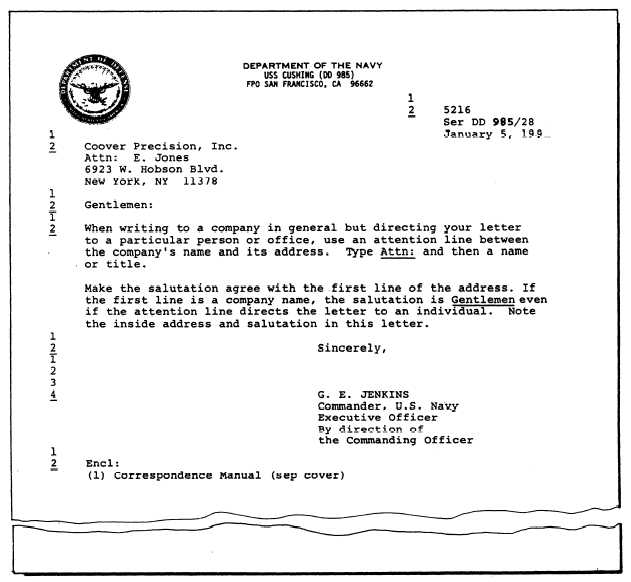Figure 16-3.—Business letter.
One of the most important tasks you will perform
in the public affairs office is drafting the naval letter.
Whether responding to “fan mail” (a request for a
welcome aboard booklet, photographs, etc.) or a media
query, your letters must be letter-perfect and
grammatically correct.
STANDARD NAVAL LETTER
The format of a standard naval letter is shown in
figure 16-2. As you can see, it does not contain a
salutation or complimentary close, because it is used to
communicate with other naval commands and agencies
within the DoD. All margins and space between
headings and paragraphs are standardized. Punctuation
is used as sparingly as possible.
The body of a naval letter contains the substance or
essential facts of the communication in simple, concise,
impersonal and tactful language with no repetition. Each
paragraph should express one complete thought in
logical sequence. If tables, diagrams or sketches are
needed to add clarity to the letter, you may include them
as separate enclosures. When you draft a letter in reply
to another letter, make sure you answer all questions—
whether expressed or implied by the writer.
Use tact when you draft a letter for the superior of
the person who will sign it (for example, a letter from
your CO to the admiral). In this satiation, the skipper
will invite attention to a special matter; he will not
direct attention to it.
BUSINESS LETTER
The business letter (fig. 16-3) is used to correspond
with agencies or individuals outside the DON or DoD
who are unfamiliar with the standard naval letter. It may
16-3


